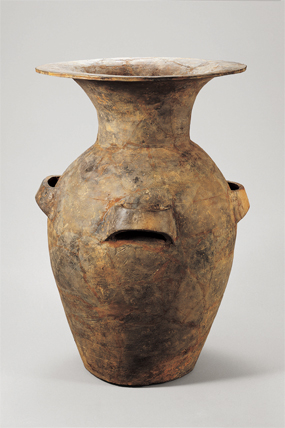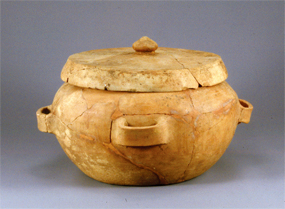NORTHEAST ASIAN HISTORY FOUNDATION 10/2014
the Cover
The first appearance of earthenware in our history coincides with the birth of a completely new lifestyle known as agrarian culture in the Neolithic Age. The earthenware made during the Koguryo era are classified into a total of thirty types. They are largely divided into practical containers used for storage, cooking, distribution of food, and transport, and non-practical containers used for burial and rituals. Most characteristically, the earthenware of Koguryo have the invariably flat bottom. In addition, the jar, steamer, plate, bowl, and the like are similar in shape to the traditional earthenware we use today. As it has turned out, their production method is also similar to the modern pottery's, suggesting that the earthenware of Koguryo is the prototype of the traditional pottery used by the contemporary Korean people.
 Photo 1
Photo 1 Photo 2
Photo 2Photo 1.
A jar with a long neck and four lugs unearthed
in Mongchon Earthen Fortress (Seoul National
University Museum, 59cm in height, late 5th century)
Photo 2.
A jar with four lugs, unearthed in Achasan Mountain
Redoubt 4 (18.5cm in height, early 6th century)


